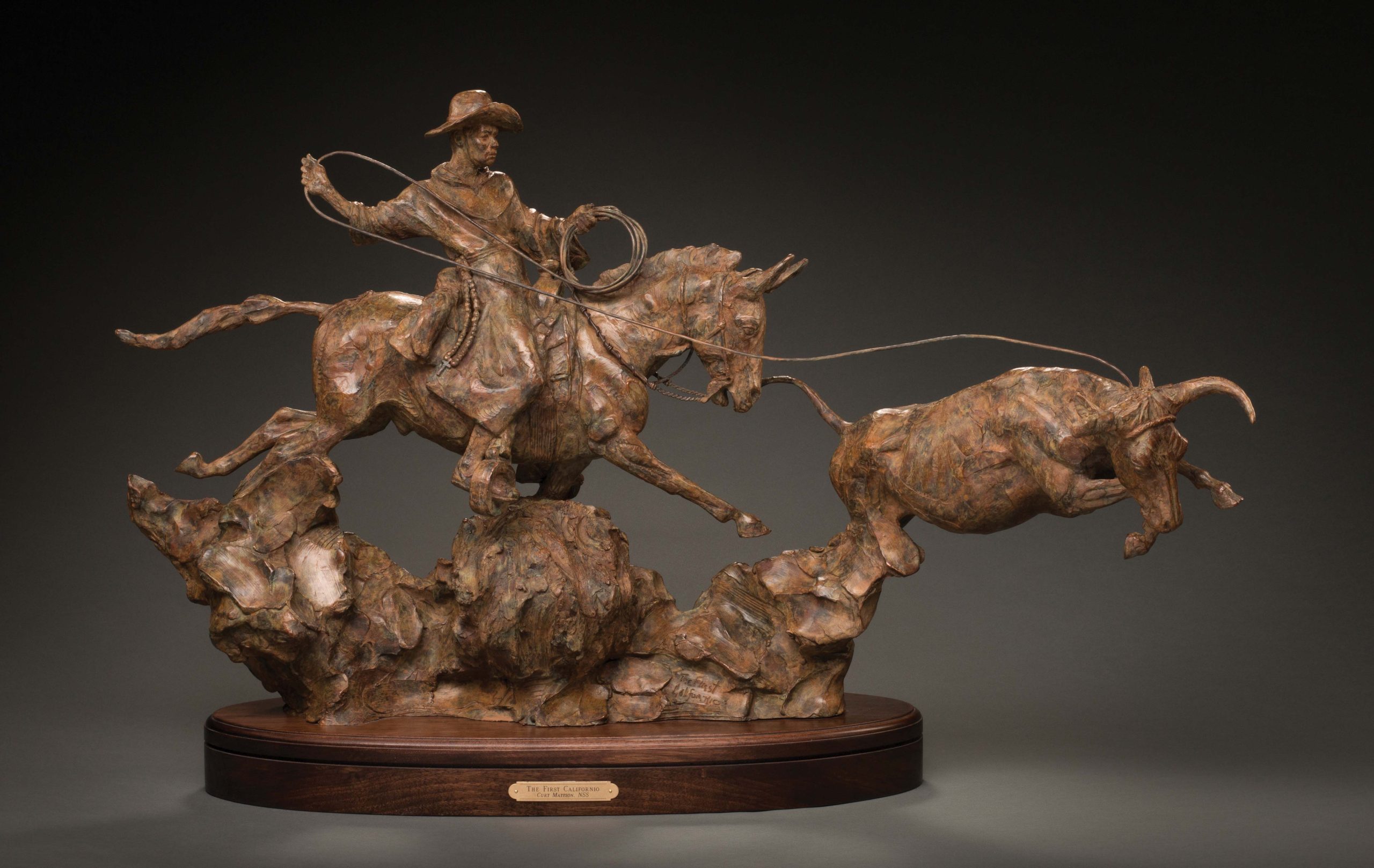
03 Jan ECHOES FROM THE WEST
Though many of Curt Mattson’s sculptures are tabletop-size, the artist himself is larger than life. A sculptor, painter, preacher, historian, and horse trainer, Mattson brings decades of study, skill, and execution to his artworks, and then that ineffable quality that defies easy definition — spirit. His bronze sculptures speak. They tell stories as striking personalities or moments frozen in time for posterity.
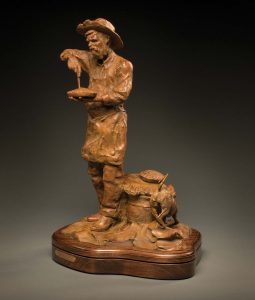
The Pie Thief | Bronze | 2.5 x 13.5 x 11 inches | Edition of 20
Mattson, whose work is represented by Broadmoor Galleries in Colorado Springs, Colorado, and Mountain Trails Galleries in Sedona, Arizona, muses on the story behind Dressed to Impress. The sculpture depicts a vaquero in his finest on a horse similarly outfitted. “In these early Californio days of the great ranchos, courting a girl was a very formal affair. This vaquero has his eye on a particular señorita, and so he is off to pay her a visit,” Mattson explains.
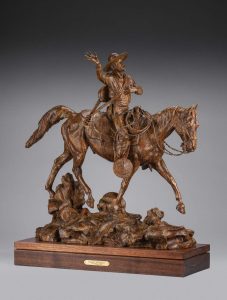
Dressed to Impress | Bronze | 24 x 20.5 x 11 inches | Edition of 9
To tell this imaginative narrative, the artist is attentive to nuance. The vaquero exhibits a sense of pride in his craftsmanship, as he likely fashioned the center-fire saddle and the elaborate spade-bit on his horse, given the modest wages he would have earned at the time. Braided rawhide reins and a bridle decorated with silver conchos match the elegance of the rider’s short jacket and red sash around his waist. His pants are buttoned at the knee, with botas, the precursor to chaps, on his lower legs. In Mattson’s world, where statues speak and move, it’s a fine night to serenade — with guitar, no less — a chaperoned señorita at the ranch. It’s fitting, then, that the vaquero’s one hand rests near his heart while the other is flung upward in celebration.
For Mattson to share accurate stories, he depends on his sources, which, in some cases, are old journals from the cultures and periods his artwork represents. The artist also references his life experiences, as he has lived a cowboy life. Born in California, Mattson comes from a long line of equestrians. His family trained and showed horses, and he worked on ranches stretching from California to Alberta, Canada. Mattson’s grandfather taught him to make saddles and riding gear and encouraged his interest in sculpture “in order to tell stories of the buckaroo.”
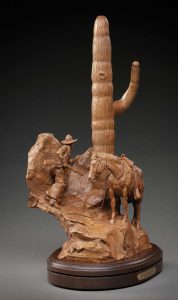
Checkin’ His Back Trail | Bronze | 20.5 x 10.5 x 11 inches | Edition of 20
In 1988, taking his grandfather’s advice, Mattson pursued sculpture as his full-time occupation. Today, from his home in Cave Creek, Arizona, Mattson is often out on the trail riding horses with his wife Wendy, an equine aficionado and a woman of similarly stern stuff when it comes to plunging headfirst into the storied world of Western art.
Mattson creates each artwork from an authentic vantage point. Take, by way of example, the sculpture Bunk House Scholar, which portrays a cowboy absorbed in a book. While this scene may surprise some, reading was a well-known and beloved pastime in the Old West. Long hours in the saddle, spent on constant alert against a herd of perils, left little time for relaxation, let alone entertainment. Books, like precious treasures, were tucked into bedrolls. “Reading was one of the pleasures cowboys enjoyed around the campfire at night — and that continues to this day,” Mattson says.
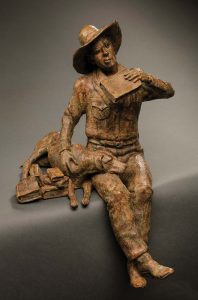
Bunk House Scholar | Bronze | 15.5 x 9.25 x 12.75 inches | Edition of 20
The cowboy depicted in Bunk House Scholar is from between 1910 and 1930. He examines the stack of books in his eclectic library, and some of the titles might surprise, says Mattson. The cowboy’s reading buddy, a restful dog, seems to think that they might be there for a while. Jamie Oberloh, director of Broadmoor Galleries, says the piece breaks the fourth wall, as the bronze, perched on a shelf, would see the cowboy’s feet kicking off into thin air.
Mattson’s historical and cultural accuracy — his immersion in the ways of the American West and its people and places — distinguishes and animates his work, says Oberloh. “Our collectors are authorities. If they are buying a cowboy bronze, they know cowboying. If there is any inaccuracy, they can pick up on it instantly. They recognize the difference between, say, vaqueros and cowpunchers. And they know that Mattson knows his stuff.”
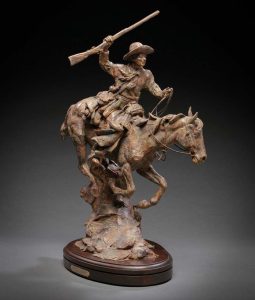
The Joy of A Friend | Bronze | 23.5 x 18.25 x 9 inches | Edition of 9
Sculpture initially drew Mattson to art, but he also paints and draws and has a strong affinity for Ed Borein’s watercolors. Like many historic Western artists, Mattson learned from the greats, including celebrated cowboy artist Mehl Lawson.
Quickness is the last attribute you might expect in a sculptor and painter like Mattson. You may think cowboys are slow to move because they think long, hard, and with deliberation. Mattson does all that — at the speed of a Thoroughbred. As he reflects on his life rife with teachers, well-wishers, and matters of “chance,” Mattson, a Christian evangelist, says with conviction that God has been in his life in good times and those that appear to be adverse.
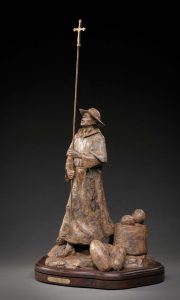
A Thankful Heart | Bronze | 29.5 x 14 x 12 inches | Edition of 9
Recently, his creative focus has been on sculpting the Franciscan period beginning in 1767. Take, for example, the sculpture A Thankful Heart. The work refers to the Mission Era of the late 18th century in California and Arizona. “It is truly remarkable what the first Jesuits, then Franciscan padres, went through as they sought to bring the Gospel to this wild region,” Mattson says.
The artist read the journals of the mission priests, who established a mission system that stretched from the Arizona desert to coastal California. Mattson sometimes visits a national park in Southern Arizona to walk in the footsteps of those early Franciscan friars. A Thankful Heart depicts a Franciscan padre carrying a cross and singing praise songs. He’s surrounded by the blessings of the harvest: pomegranate, corn, cantaloupe, and watermelon.
In the tradition of Western art giants Frederic Remington and Charles Russell, Mattson is an artist who harkens to an era dedicated to storytelling through realism, says Susan Morrow Potje, co-owner and show director of Celebration of Fine Art in Scottsdale, Arizona. Potje likens the work and style of Mattson, who has been exhibiting at the event for 23 years, to a “living history book of the West.”
Yet, despite such praise, Mattson is modest, perhaps because he believes divine grace is the power in play. Through his bronzes, Mattson extends an invitation to pause and celebrate the experiences of these Western figures. “We should have a great respect for the people of the West, and all they did, and all they do, in very difficult circumstances,” he says.





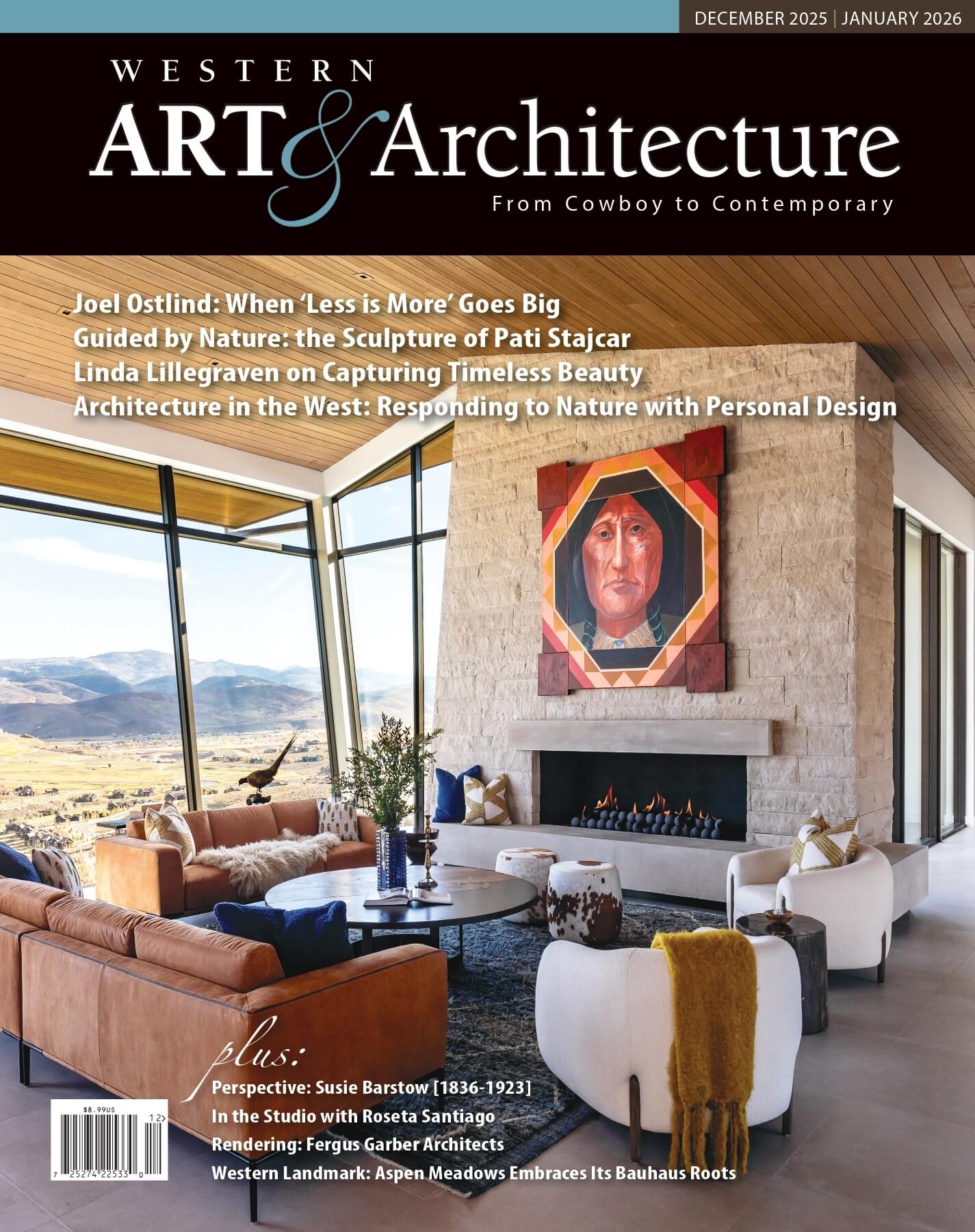
No Comments